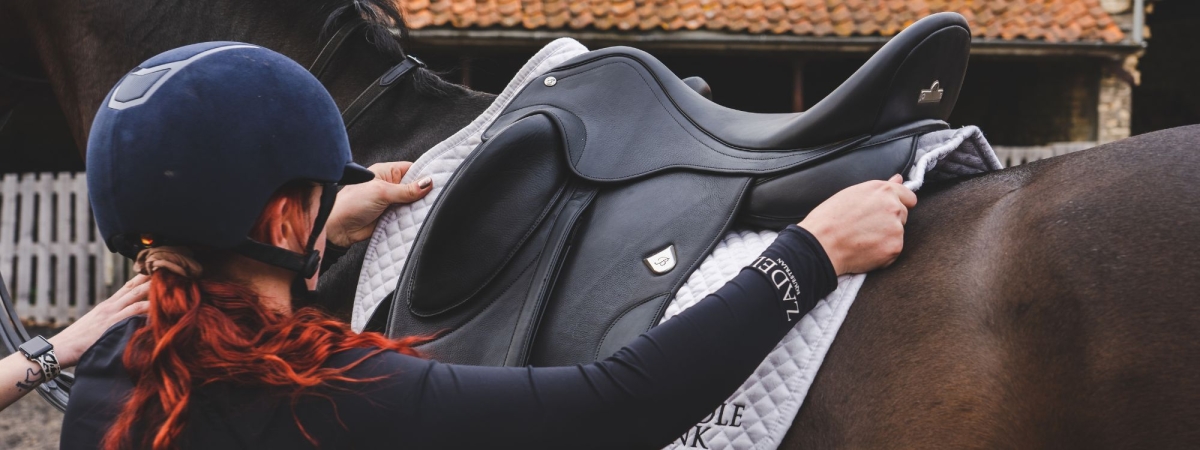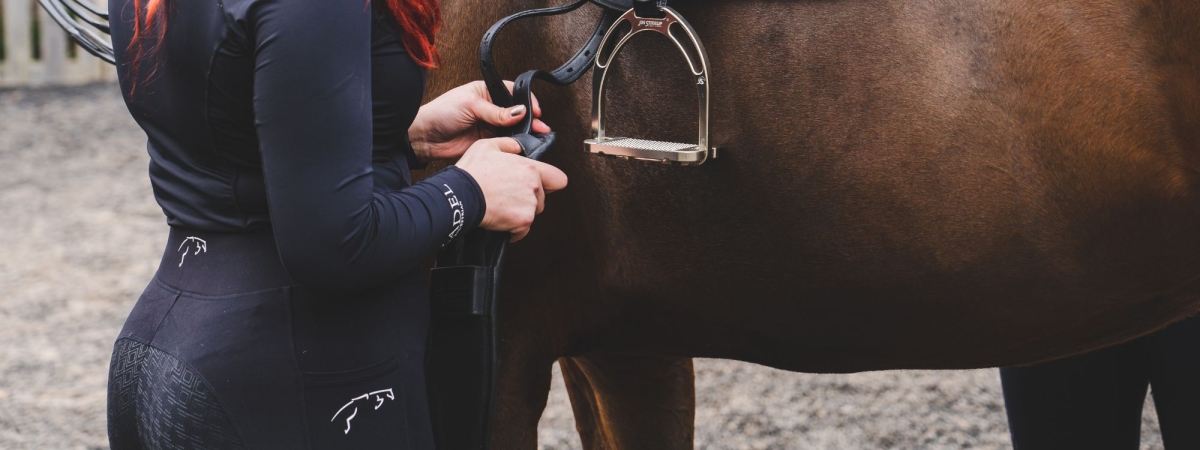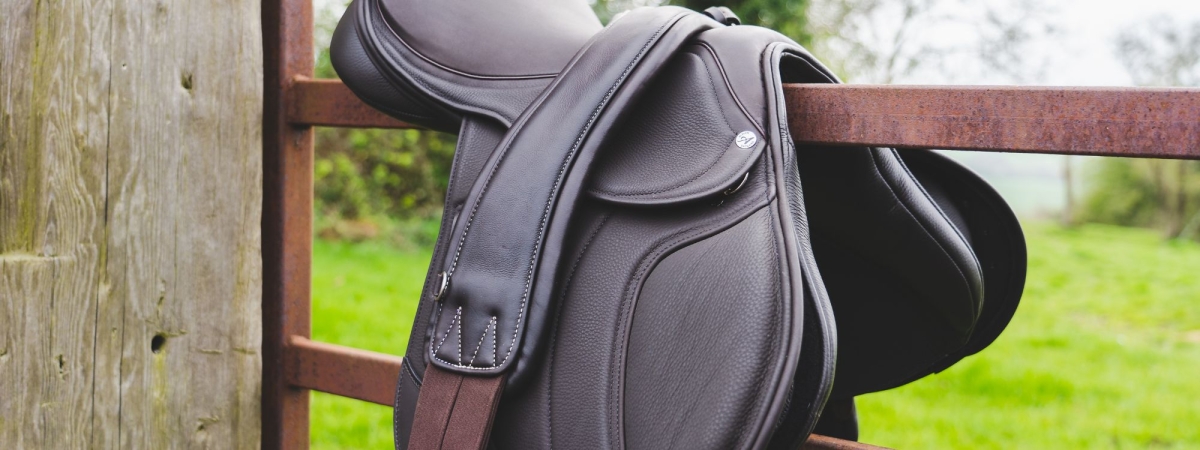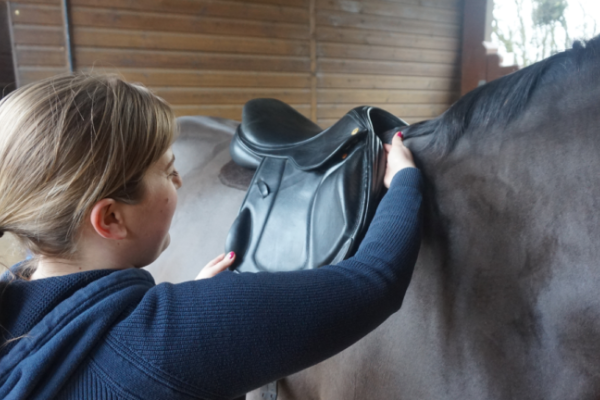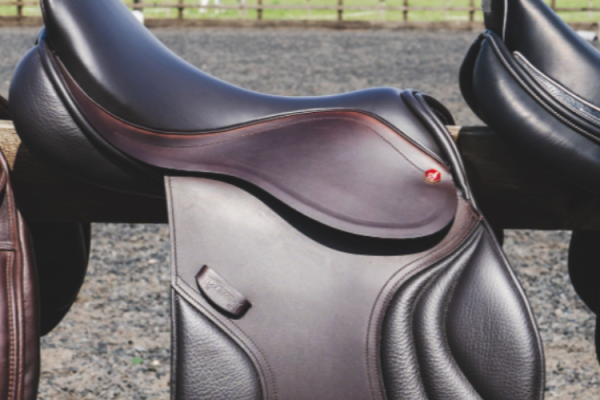How to stop your saddle slipping sideways
How To Stop Your Saddle From Slipping Sideways
In this article we will discuss saddles slipping sideways and reasons why this might happen. This blog should help give you an idea of what to look for and what could be causing your saddle to slip and what measures can be taken to resolve it.
You may be interested in this post if you are worried that your saddle might be slipping, The Saddle Bank are here to shed some light on the situation, and help you to find a solution that works for both you and your horse. Let’s break down the key elements.
If you are still a bit confused about which saddle or any saddle related product is best for you why not get in touch with our friendly customer support team. Via phone on 01733 301 488 or email info@thesaddlebank.com. Our lovely team are always happy to help as much as they can and provide you with the information you need to make the best decision for you and your horse.
Why Does Your Saddle Slip?
Your saddle doesn’t fit
The main reason saddles tend to slip is perhaps the most obvious, but it can be the most difficult to get right - the saddle doesn’t fit. There is a broad spectrum that covers the term “doesn’t fit” and you may have a saddle that, in theory, does fit your horse, i.e. the seat size is appropriate, and the gullet width is also correct. However this does not necessarily mean that your saddle fits completely. Some saddles have even been professionally fitted; but are now slipping as the horse has changed shape and the saddle no longer fits. Here at The Saddle Bank we know how vital it is to horse welfare to make sure that your saddle fits correctly, and we implore you to get a qualified fitter out to be certain.
A poor-fitting saddle can mean that you are being positioned off centre to your horse when riding. Which can have a detrimental effect to your horses back. This can, over time, leave long lasting issues due to the improper distribution of weight. At The Saddle Bank we have created a fantastic course for you to be able to recognise the signs of a poor fitting saddle yourself. It is for all horse owners but especially for somebody that may not be totally sure if their saddle fits correctly or not. The course is available from us at The Saddle Bank here.
We all love our horses and ponies, and sometimes when they are in pain they can act out. If you notice that your horse is showing signs of pain when putting the saddle on. Tightening the girth, or mounting, this could be the horse trying to communicate that the saddle doesn’t fit correctly, and should be investigated.
Your girth is incorrect
Another element to explore with an ill-fitting saddle is the girth type and quality. It’s important to note here that while a good quality girth, made with decent materials to a high standard, may be more of an investment than an everyday purchase, an expensive girth does not necessarily mean that it is inherently good. Furthermore, a more economical option isn’t always going to be less well-performing.
The important thing is to get the right type of girth for your horse and saddle. For example, if you are using a monoflap saddle you should always use a short girth. They are designed to be anchored to the horse lower down on the horse’s belly. If you have a horse that has a large and round barrel you may find that you should be looking towards anatomical girth shapes. These are designed to be positioned further back and hold the girth in the correct place to prevent it sliding forwards.
A common cause for saddle slippage, as the saddle moves to the narrowest part of the horse’s belly, making the girth looser. If you have a girth that has elastic, please ensure that the elastic is even on both sides. If you have elastic on only one side of the girth, the tension will be uneven and may cause saddle slippage. You should try to only use girths where both or neither side are elastic. If you have an older girth, be sure to check that the elastic is still strong and springy. You may find that the leather or material of the girth itself is still fine, but the elastic is starting to erode and isn’t holding the saddle at all.
Your girthing arrangements need changing
While we are on the topic of girths, there may be different arrangements for you to be able to attach your girth to the saddle that will achieve a different result, dependant on your horse’s body type. On certain types of saddle, you may find that there are point and balance billets to fix the girth to, and you can check with your saddle fitter to see if any of these girth strap options can be used to your advantage. Attaching your girth to the saddle in different ways can achieve different results, and distribute the weight of saddle and rider in different ways, helping to make it more secure if you struggle with the saddle slipping.
You are a wonky rider
Accepting that you are a wonky rider may be a hard pill to swallow. Unfortunately it’s something that a lot of (if not all!) equestrians will struggle with, at one point or another during their riding careers. Fret not if you feel that you may be a wonky rider! There are a multitude of helpful tools and professionals available to be able to help you in correcting this.
One of the increasingly popular options is to book yourself a session on a horse simulator with an instructor. Many of these simulators have inbuilt technology that will assess your balance. As well as weight distribution while riding in all three gaits, and even while jumping. Several sessions with a simulator can help you to better understand your strengths and weaknesses as a rider. Without putting strain on your horse. One of the best parts of having an analysis done in this way is that you can often see the results in real time on a screen in front of you. Whilst being able to talk through them with your instructor for clarity and best methods for correction.
You may want to consult the help of a chiropractor or bodyworker. They will be able to help you understand muscle groups and your musculoskeletal system while you are riding to help you correct your riding position. They might even be able to identify particular areas of weakness, and exercises to help you strengthen these.
You mount from the ground
Lastly, is a topic that is often debated amongst equestrians as to its long-term effect on the horse; mounting from the ground. Generally mounting from the ground can pull the saddle to the nearside of the horse as you are mounting. We here at The Saddle Bank strongly encourage everyone to use a mounting block or step whenever possible to mount your horse. Not only will this reduce strain to your horse and your horse’s back. Mounting from a block will potentially stop your saddle from slipping; allowing you to start your riding session on the best foot. As well as reducing the risk of actually twisting your saddle.
Learn more about how saddles should fit….
If you are a horse owner or rider and would like to learn more about saddle fitting. As well as how the saddle can impact your horses performance and welfare, click on the image below:






